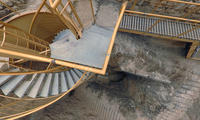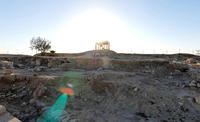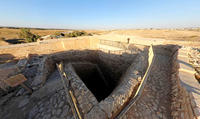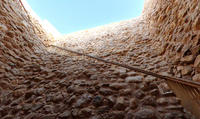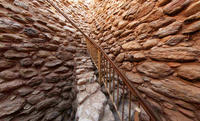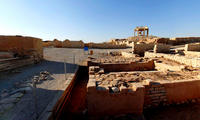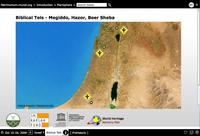You are in: Middle East -> Israel -> Biblical Tels - Megi... , and traditional search or Image Gallery will yield results of this site only
Biblical Tels - Megiddo, Hazor, Beer Sheba
| Site number: | 1108 |
|
| Type of site: | Cultural | |
| Date: | Pre-historic | |
| Date of Inscription: | 2005 | |
| Location: | Eurasia, Israel, Megido, Upper Galilee and Beer Sheba regions | |
Up to 75 images are shown here. Click on each for more details or on Image Gallery for more images.
| Description: | Tels (pre-historic settlement mounds) are attributes of the flatter lands of the eastern Mediterranean, principally Israel, Lebanon, Syria, and Eastern Turkey. Out of Israel’s more than 200 tels, Megiddo, Hazor and Beer Sheba are characteristic of tels that hold considerable remains of cities with biblical associations. The three tels also portray some of Levant’s best examples of intricate Iron Age, underground water collecting systems, made to serve dense urban communities. Their construction traces over the millennia reveal the existence of centralized authority, affluent agricultural activity and the power over significant trade routes. --WHMNet paraphrase from the description at WHC Site, where additional information is available. For 360 degree imaging of this site, click here. | |
| Tel Hazor (Hebrew: תל חצור) is a tell above the site of ancient Hazor, whose archeological remains are the largest and richest known in modern Israel. Hazor was an ancient city located in the Upper Galilee, north of the Sea of Galilee, between Ramah and Kadesh, on the high ground overlooking Lake Merom. In modern times, the site has been subject to several excavations, beginning in 1955 with those funded by James A. de Rothschild, which were published in a dedicated five volume set of books by the Israel Exploration Society. In 2005, the remains of Hazor were designated a World Heritage Site by UNESCO as part of the Biblical Tels - Megiddo, Hazor, Beer Sheba. --Wikipedia. Text is available under the Creative Commons Attribution-ShareAlike License. For 360 degree imaging of this site, click here. | ||
| Source: | http://whc.unesco.org/en/list/1108 | |
| Reference: | 1. UNESCO World Heritage Center, Site Page. | |



























